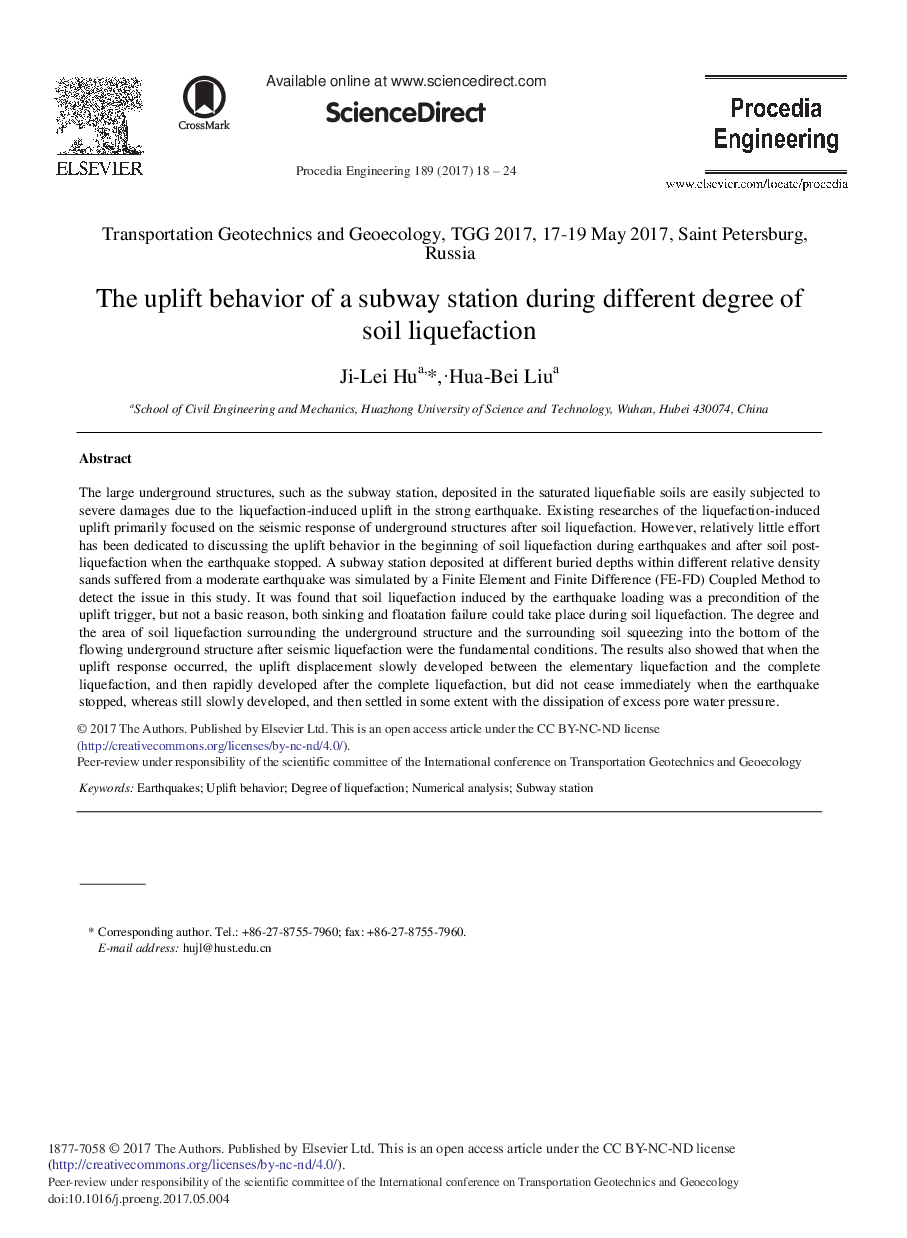| Article ID | Journal | Published Year | Pages | File Type |
|---|---|---|---|---|
| 5027679 | Procedia Engineering | 2017 | 7 Pages |
Abstract
The large underground structures, such as the subway station, deposited in the saturated liquefiable soils are easily subjected to severe damages due to the liquefaction-induced uplift in the strong earthquake. Existing researches of the liquefaction-induced uplift primarily focused on the seismic response of underground structures after soil liquefaction. However, relatively little effort has been dedicated to discussing the uplift behavior in the beginning of soil liquefaction during earthquakes and after soil post-liquefaction when the earthquake stopped. A subway station deposited at different buried depths within different relative density sands suffered from a moderate earthquake was simulated by a Finite Element and Finite Difference (FE-FD) Coupled Method to detect the issue in this study. It was found that soil liquefaction induced by the earthquake loading was a precondition of the uplift trigger, but not a basic reason, both sinking and floatation failure could take place during soil liquefaction. The degree and the area of soil liquefaction surrounding the underground structure and the surrounding soil squeezing into the bottom of the flowing underground structure after seismic liquefaction were the fundamental conditions. The results also showed that when the uplift response occurred, the uplift displacement slowly developed between the elementary liquefaction and the complete liquefaction, and then rapidly developed after the complete liquefaction, but did not cease immediately when the earthquake stopped, whereas still slowly developed, and then settled in some extent with the dissipation of excess pore water pressure.
Related Topics
Physical Sciences and Engineering
Engineering
Engineering (General)
Authors
Ji-Lei Hu, Hua-Bei Liu,
